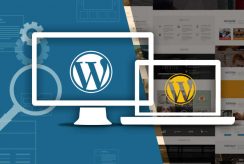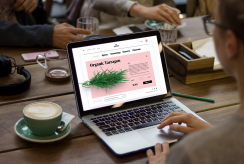Freedom that is free of responsibilities can make one oblivious of one’s image in society. Similarly a website with all the bells and whistles attached, but poor in content and focus will hardly be noticed on the web. In our endeavour to create a lasting impression, one tends to exhaust all options available without really thinking about the need for such garish features.
Since reading from a web page can be more difficult than that from a printed document, the background colour for the website must be such that the text is readable with minimum effort. While superimposing text on to graphics, the text should still be clearly visible.
Restrict the urge to put in the flashiest of graphics. Flash player is a tool that has been developed from a basic code that is well suited for web applications. But Flash on its own does not display well on many of the sites. Do not prompt the users to download the latest versions of plugins, since they might just move on to another site in disgust. Also, beware of using too many animated graphics to promote products which may be totally unrelated to the site, but whose endorsement you have been paid for. Viewers visit a website with a specific purpose and don’t like to be bombarded with unwanted information.
Using the generally accepted tabs like Home, About Us, Services, Products and Contact Us helps the user get more confident while navigating the site. Even at the risk of appearing to be predictable, structuring information under appropriate headings either alphabetically or otherwise makes searching easier. Incorporating a search box that can pick up keywords from all throughout the site is strongly recommended. Consider the official site of the USFDA – www.fda.gov. The search box throws up all possible information stored under the hundreds of tabs displayed on the site.
Users like to be lead accurately to the site when keywords are used. Hence making use of meta-tags, which should give a precise summary of the page, is always appreciated. Incorporate universally acceptable fonts and options to increase or decrease font size.
Majority of web users are those with less time at their disposal. Hence, try to minimize the loading time and computer memory required for web pages. If the subject matter is too vast, break it up into paragraphs and display on successive pages. All the major browsers must easily display the web pages.
Maintain a header or footer for each page displaying the navigation tool, to avoid the need to use the “Back” key repeatedly. The pages should clearly display the current position where the user has reached. As a generally accepted norm, the navigation buttons should appear on the top or left hand side.
Using similar backgrounds for all pages is advisable, so as to have a thread of commonality running through. This also creates an impression of a unique identity in terms of colour for the site.
The web is a media where users have the option to view what they choose and skip the others. This makes it in fact, easier for developers to gauge their prejudices and preferences, the only requirement being the use proper audience analysis.






